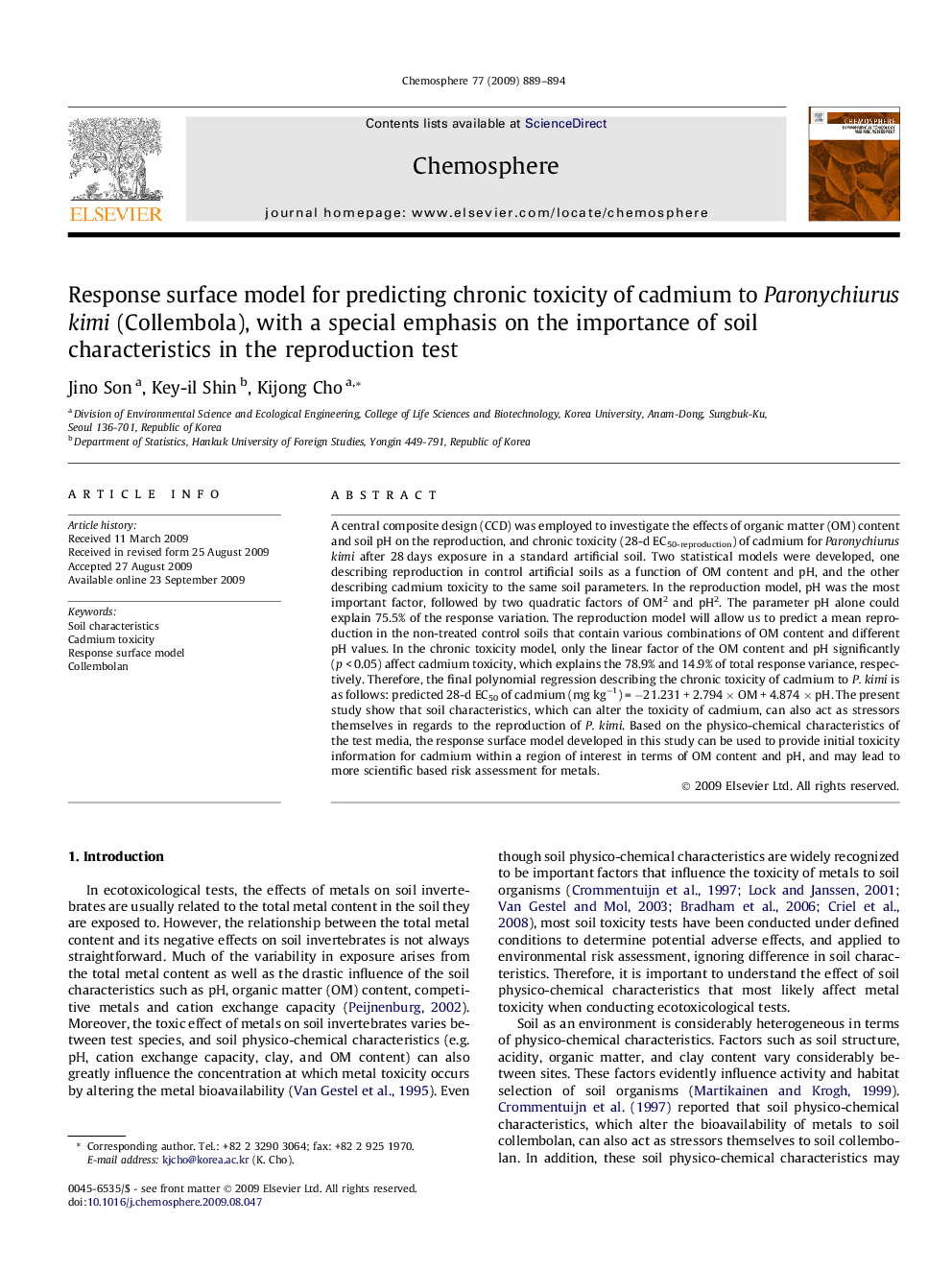| Article ID | Journal | Published Year | Pages | File Type |
|---|---|---|---|---|
| 4412429 | Chemosphere | 2009 | 6 Pages |
A central composite design (CCD) was employed to investigate the effects of organic matter (OM) content and soil pH on the reproduction, and chronic toxicity (28-d EC50-reproduction) of cadmium for Paronychiurus kimi after 28 days exposure in a standard artificial soil. Two statistical models were developed, one describing reproduction in control artificial soils as a function of OM content and pH, and the other describing cadmium toxicity to the same soil parameters. In the reproduction model, pH was the most important factor, followed by two quadratic factors of OM2 and pH2. The parameter pH alone could explain 75.5% of the response variation. The reproduction model will allow us to predict a mean reproduction in the non-treated control soils that contain various combinations of OM content and different pH values. In the chronic toxicity model, only the linear factor of the OM content and pH significantly (p < 0.05) affect cadmium toxicity, which explains the 78.9% and 14.9% of total response variance, respectively. Therefore, the final polynomial regression describing the chronic toxicity of cadmium to P. kimi is as follows: predicted 28-d EC50 of cadmium (mg kg−1) = −21.231 + 2.794 × OM + 4.874 × pH. The present study show that soil characteristics, which can alter the toxicity of cadmium, can also act as stressors themselves in regards to the reproduction of P. kimi. Based on the physico-chemical characteristics of the test media, the response surface model developed in this study can be used to provide initial toxicity information for cadmium within a region of interest in terms of OM content and pH, and may lead to more scientific based risk assessment for metals.
